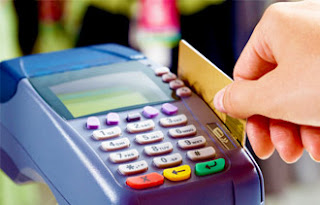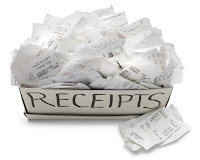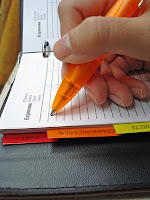Previous Topic:
Step 2: Tracking Your Income / Step 3: Comparing Income:Expenses
So far we have tracked expenses and income, as well as compared the two amounts to reveal if there is left over monies or if you need to cut back on your spending. The next step will look back at your expenses that you tracked in Step 1: Tracking Your Expenses
(Part I) and
(Part II) and see where you can trim excess spending.
Step 4: Trimming the Fat
This step involves really looking at the way you spend your money and assessing areas in which you could cut back. Whether or not Step 3 revealed a positive or negative amount, it is suggested to still review your past spending, you may end up with an even large amount of money left over at the end of the month which you can use towards reaching your life goals faster.
Trimming the fat comes before actually assigning amounts to different budget categories. Take this time to reflect on how youʻve been spending your money and think about your financial goals and what it will take to help you achieve those goals. If your goal is to have more money at the end of the month, instead of living paycheck to paycheck; then passing up on that weekly shopping spree might be a good place to start. To begin this reflection and assessment process letʻs start with needs vs wants.
In this step is where distinguishing between Needs and Wants is important. Good money management involves having enough money to cover all your "needs," while purchasing "wants" only when you have extra money to do so. Let me first define these two concepts.
Needs - something you must have for survival -- something that you canʻt live without. Food, shelter, and clothing are examples of needs.
Wants - something you would like to have -- something not absolutely necessary for your survival, but that you would enjoy having. Examples of wants include iPods, designer clothes, vacations, Xboxes, or Rolex watches.
Variable Expenses
It is within your spending on your variable expenses, where your needs and wants will help to determine where you can cut some of your spending. You were asked in
Part II of Step 1 to notate a N for Need and a W for Want. Begin with the category of your variable expenses that has the most Wʻs.
Letʻs take a look at our example:
The most Wʻs are found in the
Entertainment Category. This is typically where families can cut costs. This family, spent $144.17 on entertainment in one month. With the rising cost of watching movies at a theatre it is very common for families to spend much more than amount this on entertainment. An alternative to spending large amounts on entertainment is to find fun and engaging activities to do with the family that are FREE. For example, going to the beach, borrowing a movie from the library or a friend to watch at home, or spending family time at the park.
You donʻt have to eliminate Entertainment, but in the next step we will assign amounts to the categories. For now, you can think about what a reasonable amount to spend on entertainment for your family would be.
The next category to look at from our example would be the
Clothing Category.
This is another category where families can often cut costs. Think back to what you needed the clothing for. Was it for work, for a party, just because you thought it was cute? Think about ways you can save money on clothing for your family. Accepting hand me downs for your kids, shopping at a thrift shop or discount store, or looking through the Sale and Clearance Rack for good bargains are great ways to cut back on clothing costs.
Again, you donʻt have to eliminate this category from your spending. Just remember to be mindful of the amounts that you are spending
Lastly, we will take a look at the
Dining Out category.
I noted these transactions as both Need and Want. Many will argue that you NEED to eat, but is it necessary to eat out excessively when you could prepare a meal for a lot less at home (not to mention it would probably be a healthier option to cook)? Itʻs perfectly fine to enjoy a meal out from time to time. But if you find yourself drowning in bills and not being able to pay on time then think twice about dining out.
For busy families, dining out is a part of the routine. Just be mindful of your selection of eateries and eat at places that give you the most bang for your back.
Fixed and Fixed-Variable Expenses
Excess spending can also be found in your fixed and fixed-variable expenses. For example, when was the last time you evaluated your Auto Insurance Policy. Do you still need the same amounts of coverage? Are you taking advantage of all the discounts that your insurance provider offers? Have you shopped around for a policy through a different provider?
Your electric bill is also a place where families can save a buck or two. Hawaii Energy is a great resource to find ways on how to save money on your electric bill.
Take your time as your go through your transactions that you have tracked. A good question to ask yourself when purchasing something that is a want is, "What else could this money be used for?" This will help you determined if you still really WANT to make that purchase.
After looking at the way you spend you money you may be feeling a bit overwhelmed, or even defeated. Donʻt let it get you down, acknowledging the way you negatively spend money and making a commitment to change your spending behavior to be positive, is a giant step in the right direction.
Next Blog Topic:
Step 5: Defining Budget Accounts
































